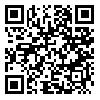Volume 16, Issue 5 (2016)
MCEJ 2016, 16(5): 91-102 |
Back to browse issues page
Download citation:
BibTeX | RIS | EndNote | Medlars | ProCite | Reference Manager | RefWorks
Send citation to:



BibTeX | RIS | EndNote | Medlars | ProCite | Reference Manager | RefWorks
Send citation to:
salehikalam A, abdi A, aminrad A. Analyzing deceleration time lead to congestion in based on behavior patterns. MCEJ 2016; 16 (5) :91-102
URL: http://mcej.modares.ac.ir/article-16-4080-en.html
URL: http://mcej.modares.ac.ir/article-16-4080-en.html
1- student , salehikalam.arsalan@gmail.com
Abstract: (5928 Views)
Different reasons cause traffic oscillation such as: sudden speed drop of leader vehicle. Stop and go traffic commonly observed in congested freeway traffic result in traffic oscillation. When follower driver of platoon receives the last released wave of downstream to upstream in the traffic oscillation, driver makes different reactions proportional to released wave. They result in forming different behavioral patterns and behavior diversion from equilibrium driver. Follower vehicle drivers of platoon make different reactions to receiving wave based on behavior patterns. In this paper, this study employs vehicle trajectory data from Next Generation Simulation (NGSIM) program. Platoons of vehicles identified through a traffic disturbance classify in deceleration and acceleration phase based on driver behavior and hysteresis in traffic oscillation. Driver behavior in deceleration phase lead to congestion classify into four behavioral patterns: under reaction, under constant reaction, over reaction, over constant reaction based on maneuvering errors of follower driver. And also, in acceleration phase based on traffic hysteresis it classifies into two categories: aggressive and timid behavior. In this search, we can study only three driver behaviors: Over Reaction-Timid, Over Constant Reaction-Timid, Under Reaction-Timid because of vehicle trajectories data failure. When follower vehicle in traffic oscillation receives the last deceleration wave lead to congestion, follower vehicle deviates with equilibrium behavior, Newell trajectory, based on driver behavioral patterns. Every car-following model is used to explain the dependency of the follower vehicle trajectory, and its position at time t, to leader vehicle. According to fig.4, if leader vehicle (n-1), moves with constant speed (v), the follower vehicle must move with constant speed (v), too. Spacing between follower and leader vehicles at the time (t) can be changed, but if the freeway was homogenous, the spacing must be constant at approximately Sn; however, it can be varied for different types of vehicles. In this case, all the vehicles are considered as the same type. According to fig 5.a, in the Newell`s model, when a leader vehicle changes its speed from v to v`, the disturbance wave by speed of d^i/τ^i , will be sent to follower vehicle. This process results in an increase in acceleration of follower vehicle. In this model, di, τi are considered constant and independent of speed. According to fig.5.b, these characteristics result in linear relationship between speed and spacing s^i=d^i+τ^iv. Next, neural network models are developed to analyze the relationship between the microscopic parameters and time of two phases. Neural Networks are kinds of mathematical models characterized by a huge parametric space and flexible structure, and also, inspired by human brain neurons. In this article Multi-Layer Perception (MLP) related to free-Forward neural network is used by following the backward error propagation regulation, including 3 different Layers, namely, input layer, hidden layer and output layer. In comparison to more complex neural network structures, the advantage of Multi-Layer perception is its procedure according to universal function approximation. Although by choosing the suitable active Multi-Layer perception function, the direct relationship with the statistical equal model is available, Multi-Layer perception with the active mathematical function may be considered as a general sample of mathematical regression model. There is some progress in different methods that enable the neural network to identify the impacts of input on the changes of output, more precisely, i.e., information measurement theory, partial derivative and etc. Based on three behavior patterns, analysis results present that are most effective two parameters: deceleration wave lead to congestion and stop phase time. increasing deceleration wave results in reducing time between two phases based on over reaction-timid, and results in increasing it based on under reaction-timid and pattern and over constant up reaction – timid. And also, results of stop phase lead to congestion present based on three behavior patterns that increasing stop phase results in increasing time between two phases.
Keywords: "Deceleration phase time lead to congestion", " Stop and go traffic", " NGSIM data trajectory", " Behavior patterns", " Neural Networks"
Article Type: Research Paper |
Subject:
Earthquake
Received: 2015/09/16 | Accepted: 2016/06/8 | Published: 2017/02/19
Received: 2015/09/16 | Accepted: 2016/06/8 | Published: 2017/02/19
Send email to the article author
| Rights and permissions | |
 |
This work is licensed under a Creative Commons Attribution-NonCommercial 4.0 International License. |







